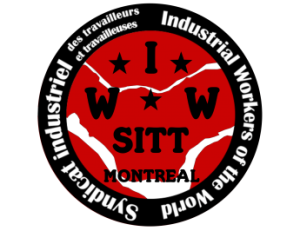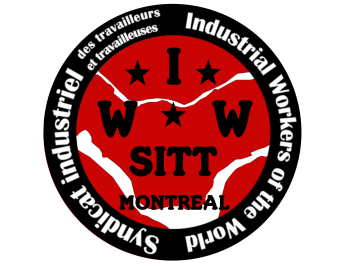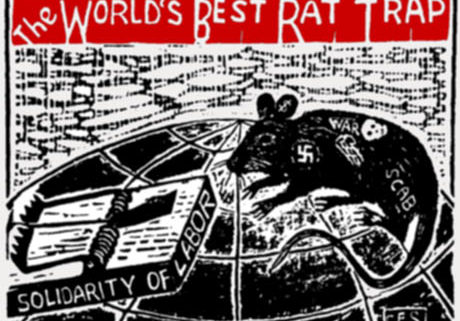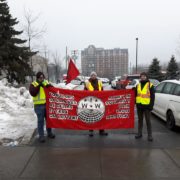The Origins of Solidarity Unionism: Minority report 1
These last years, I have occasionally contributed to a section named "Wobbling the Works”, which put the & rsquo; focus on & rsquo; impact of laws governing the world of work on & rsquo; union. I will continue to write about it from time to time, but recently my attention was focused on a concept that I designate as "minority unionism", is a way of describing a method of organization that does not wait after the majority of workers d & rsquo; a place of work to earn the legal right to negotiate. This month, I will share some aspects that have sparked my interest and led me in this direction.
Recently, j & rsquo; I had to rewrite the constitution SITT-IWW for our comrades Regional Organizing Committees, who were tired es of US spelling mistakes such as "labour” and "organising”. Scrutinize the Constitution made me think of the idea of the branches job. A job sector is a group of five or more members of the IWW-SITT in the same workplace and to meet at least once a month. This implies a more or less implied that them discuss their grievances, that & rsquo; he creates them strategies to address and establish a union presence in their work.
I am working on a project that was intended to be a video version of the classic pamphlet IWW, “A Worker’s Guide to Direct Action”, but has gained momentum after it began. By making the search for the video, I saw Miriam Ching Yoon Louie talk about his book, Sweatshop Warriors, which provides excellent examples of how the centers of Immigrant Workers es have helped many workers understand their rights and organize themselves around various problems at work and in the community. I also had the chance to interview Barbara Pear, a maid at the University of North Carolina and president of the EU branch number 150, When & rsquo; she visited the maintenance staff at Swarthmore College, leading a campaign for living wages for more than six years. The University union has no legal right to negotiate, but has nevertheless been successful thanks to the & rsquo; use of pressure tactics aimed at bringing administrators at the negotiating table and d & rsquo; secure improvements for workers and the least-paid workers are.
I often think of ways that workers, who do not have the legal right to negotiate or who have no collective agreement, can put the & rsquo; before to act as a union, using the law to amplify their work. This came to mind because Staughton Lynd asked me to repeat our pamphlet "Labor Law for the Rank and Filer"At a time when I had become particularly cynical with regard to the use of laws governing work in & rsquo; union. I was returning from a weekend with the family Lynd, the people "Youngstown Workers Solidarity Club"Disruptors and their cohorts, interference, veterans and vétéranes activism and d & rsquo; d & rsquo organizers, organizing student-es, from d & rsquo; across the US.
The club was developed as a parallel trade union center that filled a missing when the local plant could not provide adequate support for a strike. Hold me with these people was the antidote to the cynicism that I felt; it's not that I have more confidence in the law, but I now feel able to see the possibilities ... There's a month I saw a documentary, American Standoff, on the shore of the trucking company Overnight, I have criticized in the latest issue. “Standoff"Illustrated many problems that the working class has not adequately confronted. How can we organize ourselves in companies that are so anti-union they are willing to spend millions of dollars just to keep worker-are far from the negotiating table? The campaign Teamsters in Overnight, which is currently in a difficult situation that it is not even certain that it can be taken in hand, is the latest example of a long list of campaigns that left the trade union left scratching their heads wondering how to deal with self-destructive employers and labor laws completely backward. Sure, the answer, it is not to give up. But it s & rsquo; is not to simply d & rsquo; a clique of agitators and d & rsquo; agitating minority on each workplace. It s & rsquo; is to create real solidarity networks that are organized and able to win improvements in individual workplaces, through industries, and for the benefit of the international working class.
And, finally and especially, several comrades on the other side of the Atlantic sent me an article on minority unionism that appeared in a recent edition of the magazine The Nation. L’article, written by Richard B. Freeman et Joel Rogers, argues that theAFL-CIO should develop a d & rsquo plan organization that does not depend on recruiting the majority of d & rsquo workers; a workplace. What was amazing to receive multiple copies of this article in my emails was not the astonishment of American trade unionists who sent. The quite upside which we do chaisons is absurd. Few countries practice trade unionism as we do in the US (and Canada) with the union as the sole bargaining agent of a declared majority. I think it would help a lot if a majority of workers with whom I discuss were aware of how things are done elsewhere, and it would also be nice if people d & rsquo; elsewhere could see the consequences of the way we & rsquo; organize.
Now, that is the purpose of this section. I want to share these stories and experiences. I want to connect my classmates with resources that others have found useful in their union work. I can not offer a recipe for success. These examples will not always suitable for everyone. But an intelligent reflection on a way forward is not only a possibility, it s & rsquo; is something that is already short. And developing resources to try these ideas, we will give us the confidence to turn comments like "what a great idea!"To" I'll try it!”.
The series of “minority reports” was written and published in 2002 on the website of the IWW, by Alexis FW Buss.
Link to original article: https://iww.org/about/solidarityunionism/explained/minority1








Leave a Reply
Want to join the discussion?Feel free to contribute!